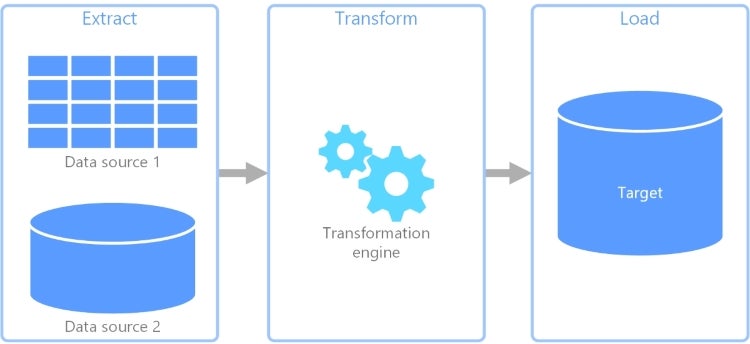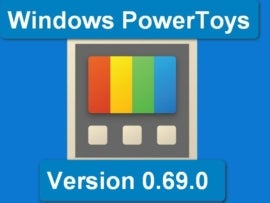
The E, T and L in both ETL and ELT stand for extract, transform and load. However, their ordering is what differentiates how they function and process data. ETL has been around for decades and gained popularity in the 1970s when companies started using multiple data repositories, or databases, to store different types of business information. ELT is a variant of ETL gaining ground as organizations migrate their infrastructure from on-premises to cloud environments.
SEE: Discover some of the best ETL tools and software.
ETL and ELT are two different data integration approaches that involve moving raw data from a source system to a target database, such as a data lake or data warehouse. While they share similarities, they have distinct differences.
Jump to:
- What is ETL?
- What is ELT?
- What are the main differences between ETL and ELT processes?
- ETL benefits and drawbacks
- ELT benefits and drawbacks
- Is ELT replacing ETL?
- ETL vs. ELT: Which is better?
What is ETL?
This data integration technique involves extracting raw or unstructured data from sources like SaaS applications, websites, social media, production databases or analytics tools. The extracted data is then transformed on a secondary processing server into a common format and loaded into a target database or data warehouse (Figure A).
Figure A

ETL is used for complex and compute-intensive transformations and works better with small amounts of data, due to its long load times. Unlike ELT, ETL is a multi-stage process:
- Data is extracted from sources.
- Data loads into the staging area for transformation.
- Data loads into a target system.
- Data is ready for analysis.
Analyzing data that has undergone the ETL process for business intelligence is usually very fast because the transformations have already occurred, and all that is left to do is query the data.
What is ELT?
With ELT, unstructured data extracted from sources is loaded into the data storage solution, such as a data warehouse or data mart directly, and data conversion and enrichment are done inside the warehouses (Figure B). This data integration method is best for processing large volumes of data.
Figure B

Here’s a breakdown of each step in ELT:
- Extract: Data is extracted from various sources such as databases, applications, files, APIs or external systems. The data is typically in its raw, unprocessed form.
- Load: The raw data is loaded as-is without any transformation or processing into a target storage system — a data warehouse or a data lake.
- Transform: The raw data is transformed, cleansed and structured to make it suitable for analysis and reporting.
One of the major takeaways from the ELT process is that there is no staging area as transformations are performed in the target system.
What are the main differences between ETL and ELT processes?
The key difference between ETL and ELT lies in the order of the transform step.
Transformation
Data transformation involves various operations, including cleaning data, aggregating, filtering, sorting, joining data, deduplicating and validating data.
In ETL, transformations happen within the ETL server or staging area outside the data warehouse. ETL process flow sequentially starts with data extraction from various sources, then data transformation to meet the target schema or format, and finally, loading the transformed data into the data warehouse. While ETL can structure unstructured data, it can’t be used to pass unstructured data into the target system.
On the other hand, ELT loads unstructured data into the target system. Unlike ETL, the three phases of ELT can run simultaneously without affecting each other’s processes. For instance, while data is being loaded into the target system, the system can transform the already received data.
Processing speed
ETL data processing is time-consuming because data teams must first load it into a staging area for transformation. With ELT, data teams can load data into the storage system and transform it concurrently, ensuring fast processing time. ELT architecture allows data teams to load data into the storage systems, eliminating the need to transform it before storing.
Data volume
Because its architecture is flexible and supports both unstructured and structured data types, ELT can process large volumes of data in a short time. The ETL system is ideal for processing complex and small amounts of data. This is mainly due to its source-to-target mappings and transformation rules, which clean and transform the data before being stored.
Cost
ETL is more expensive to manage for users, especially for small and medium businesses. This is largely due to the complexity involved in the data transformation process. Investing in server infrastructure for data transformations also costs more. ELT has low entry costs because there are fewer systems to maintain. Cloud-based SaaS ELT platforms have a pay-as-you-go pricing model, giving data teams the flexibility to scale as needed.
ETL benefits and drawbacks
While ETL and ELT offer many benefits to data users, they also have some drawbacks.
Benefits
- Compliance: When it comes to security, ETL is more secure compared to ELT. ETL architecture is designed to comply with various industry standards, including GDPR, HIPAA, and CCPA. This helps data teams protect sensitive information before loading it into the target system.
- Maturity: ETL history can be traced back to the 70s era. Many data engineers are familiar with its architecture and how to use it. ETL also has an extensive documentation library, making learning accessible for novices.
- Ideal for complex projects: ETL is appropriate for processing structured data that requires complex transformation.
Drawbacks
- Expensive to maintain: ETL can be cost-intensive due to the ongoing cost of maintaining a data transformation server. ETL often requires significant computing power and resources in the intermediary staging area for performing complex transformations.
- Limited flexibility: Data engineers must define the data source early and transform it before loading it into the target system.
ELT benefits and drawbacks
Benefits
- Quicker loading: ELT architecture supports both structured and unstructured data, meaning data from sources can be loaded into the data warehouse without going through any transformation process.
- Real-time, flexible data analysis: ELT allows for loading raw data into the target system, providing flexibility to perform transformations on demand based on specific use cases or analytic requirements.
- Low maintenance: ELT is cloud-based; it requires no specialized hardware, making it easy to manage and maintain. ELT also leverages the processing power and scalability of modern data platforms or cloud-based systems.
Drawbacks
- Data governance and quality concerns: ELT accepts all kinds of data from sources, exposing sensitive data. It doesn’t comply with GDPR, HIPAA or CCPA standards.
- Dependency on target system capabilities: ELT heavily relies on the processing power and capabilities of the target system. In some cases, the target system may need to provide robust transformation functionalities, limiting the flexibility of the approach.
Is ELT replacing ETL?
ELT and ETL are relevant and widely used approaches in data integration, each offering their own benefits and use cases. ELT allows organizations to leverage the power of distributed computing platforms, such as Hadoop, or cloud-based solutions like Amazon Redshift or Google BigQuery, which can perform transformations at scale.
While ELT has gained popularity due to the rise of cloud-based data platforms and advancements in data processing technologies, it does not necessarily replace ETL. ETL is still a valid approach in scenarios where data needs to be transformed and cleansed before loading it into a target system. ETL is often used when dealing with legacy systems, complex business logic, or compliance requirements that demand data cleansing before loading it into a warehouse.
ETL vs. ELT: Which is better?
The choice between ETL and ELT depends on factors such as your organization’s needs, use cases, data requirements, infrastructure capabilities, performance considerations and the desired analytical workflows. ETL is often favored when data requires significant transformations, strict data governance and structured processing. ELT is suitable for scenarios involving large volumes of data, flexible analysis and leveraging the processing power of modern platforms.







